Hi everyone,
Thanks for your patience with me, I know it’s been a while since my last newsletter.
To help me get some creative energy flowing, I thought I would make it easy on myself and share a little bit of what’s inside one of my notebooks.
This is a notebook I have been using since 2018. I keep notes in various places. Some in this book, others on a yellow legal pad. Workbooks get worn and I don’t expect them to last forever. The function of the workbook isn’t so much creating a permanent archive, as it is creating a tool to help the learning process. The book will decay over time. Inevitably, I will spill something on it. But more importantly, was it able to help me reinforce the ideas and new concepts I have been learning? Eventually, they will become outdated to us, as they no longer serve a purpose. That’s when they become souvenirs. You have spent enough time with them that the lessons inside are part of you. Time to get a new book and learn new things.
This is the start. August 9, 2018. I had just left La Banane in Toronto, and was about to start a five-week stage with Nan Kohler, owner/operator of Grist & Toll in Pasedena, California. I had gotten to know Nan in Montreal at A Taste of Grain conference a few months earlier, and was really lucky to have gotten the chance to spend that time with her. Even though I already had an interest in grains, Grist & Toll was my introduction to milling. It was an immersive time. I learnt about Nan’s business and the milling process, but also got to experiment with so many grains that were new to me. Creativity firing on all cylinders. Getting to listen to Eat This Podcast’s month-long series on bread and its origins on the ride to work was the perfect pre-course to our workday.
The style of baguette I was doing then, even though whole grain, was still modeled after the white baguette I was making for Bar Isabel/Bar Raval, the Tartine baguette. My baguette changed the next year when I moved to New York, and again when I brought that recipe to Vancouver with me. The canelé recipe is Nan’s, and like all her recipes, it’s worth keeping. This was the recipe I used the following January for the popup I did with Dawn, Patti, and Carole.
Here’s another page, towards the end of my time down at Grist & Toll. It was a time of constant learning and discovery, and I had to do my best to understand the underlying story and the bigger picture. Leaving Grist & Toll, I had a ton of resources to continue on the path I was one. Nan is a wealth of knowledge herself, but also wonderful at pointing out other great teachers and resources.
I had seen a world I wanted to be part of. Whole grain baking isn’t just about baking bread, it’s about being part of a small food economy. In fact, Amy Halloran had a small quote in one of her recent newsletters that said it perfectly. Borrowed from Amy’s newsletter, the quote was Ellen King From HEWN in Illinois.
A lot of the time, my older writing doesn’t have much to offer me. If it was any good, I would have used it, and it would become more and more polished and cohesive. But every once in a while, I see something that I really enjoy, and realize it was the start of something forming. I still like the part:
This system requires agricultural exploration. We need seed diversity. We need farmers willing to risk land on growing-out landrace and heirloom grains, and adapt practices to suit the grains.
Back home in Toronto, I had started making granola as a side project. For everyone reading this that used to purchase granola back then, thank you. The support I felt then gave me the confidence to do what I have done. This granola recipe is still the one I use today, and was adapted from the one published in EMP’s cookbook. It was my friend, James, who first gave me the recipe. Always grateful for him.
Also on this page, damaged by water, is something Michael Twitty said at a talk he was giving in Toronto. He was touring his book, The Cooking Gene. He said:
How you survive your oppression is the form of your cultural economy.
I must have been in some kind of flow state when I did this. Still trying to work out the big concepts I was learning. I wrote/drew these pages while sitting at Paris Paris in Toronto, drinking Occhipinti for 50% off. The triangle on the left is still a concept I use today, and was the concept I used when writing the Flavour Mutiny Manifesto that ended up getting me a job at Blue Hill at Stone Barns.
The right page is the photosynthetic process. I think it’s a normal part of growth and development, to have worked in food for so long, to want a better understanding of growing and farming.
In March of 2019 I went to New York to spend a few days at Blue Hill. I had written some questions down to ask them, took some notes from the first meeting of theirs I attended, and wrote a recipe for a loaf to bake them. After the stage, I went to Montreal for a soil conference put on by RegenCanada. I really enjoyed the speakers at that conference, and learning so much about soil health. Soil was becoming the most interesting part of a farm.
These notes were probably taken over several days during my time at Blue Hill. Notes on Iberico ham, trophic level, pea maturity, bolting, seed ownership, garlic scapes, whey, grower-producer relationships, pickled lardo. Meetings were like an education lighting round, I would just do my best to keep up. Not everyone kept notes, but those who did, like Emma and Pruitt, I always thought how cool it would be to compile them. Anyway, here’s mine.
Another page from Blue Hill meetings. Thursday meetings were led by Crop/Field Managers Jason and Kate. One day we would talk about nothing but one vegetable, others we would have bigger conversations about hybrid vs. open-pollinated varieties. The second half of the left page was me doing my best trying to keep up with a talk by Klass Martens. I found him very inspiring, and still enjoy his question:
“How can we become part of the self-recovering capacity of this land?”
Right page is another cluster covering tomato horned-worm, allelopathic species, cover crops, soil health, perennial crops.
This was December 2019, it was my last notes from Blue Hill. Speaker from White Buffalo Land Trust, then more on plant breeding and how a seed can go from being a hybrid to becoming open-pollinated. The next page, leaving Blue Hill, I was obviously feeling very polarized about farming practices.
While still at Flourist, I started working out what a menu would look like and start up costs would be for my future bakery. In the top left I had written down Small Food Bakery’s wonderful mission statement:
“Our mission is to manufacture delicious foods using ingredients directly traded and traceable back to healthy soil and good people.
Kim Bell of Small Food Bakery had been an inspiration of mine since first finding out about their work on Farmerama Radio. There is a great episode on the 2018 UK Grain Lab. Nan and Dawn were both presenters that year.
Day one of the 2022 UK Grain Lab. Laura and Dawn’s rye demo.
Last shared page, more from the UK Grain Lab. Kim’s talk on Monday on How to Do Business Differently was very impactful, as I was starting to write a business plan of my own.
I hope this was fun for you.
I’ll be in touch soon with more updates on Tommy’s Whole Grain. Please let me know in the comments if there is anything you would like me to write about.
Thanks so much for being here. GoFundMe is still up for anyone interested. Massive thanks to everyone supporting my work. Thank you.
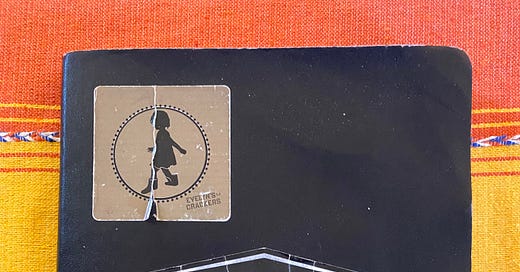



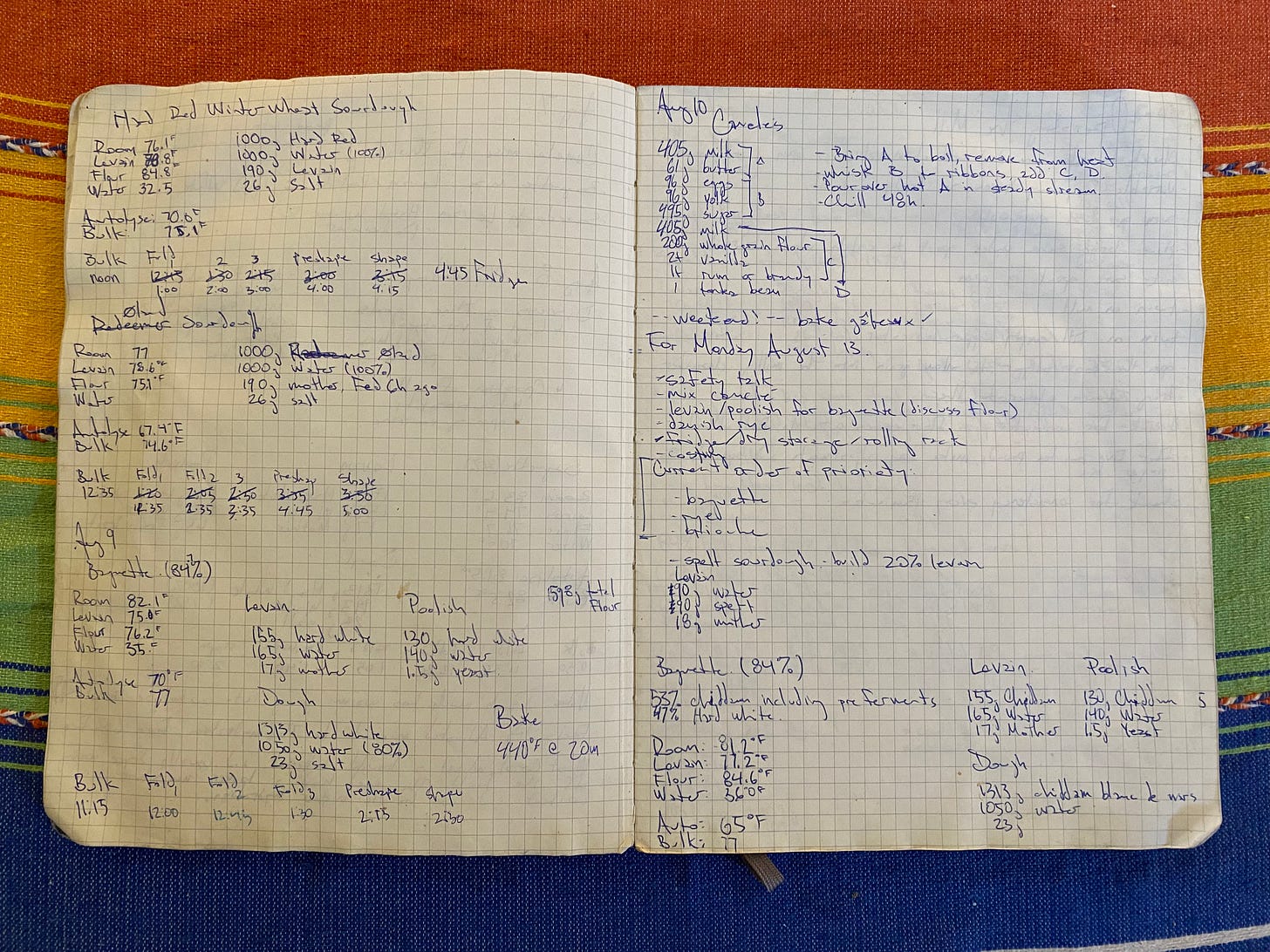
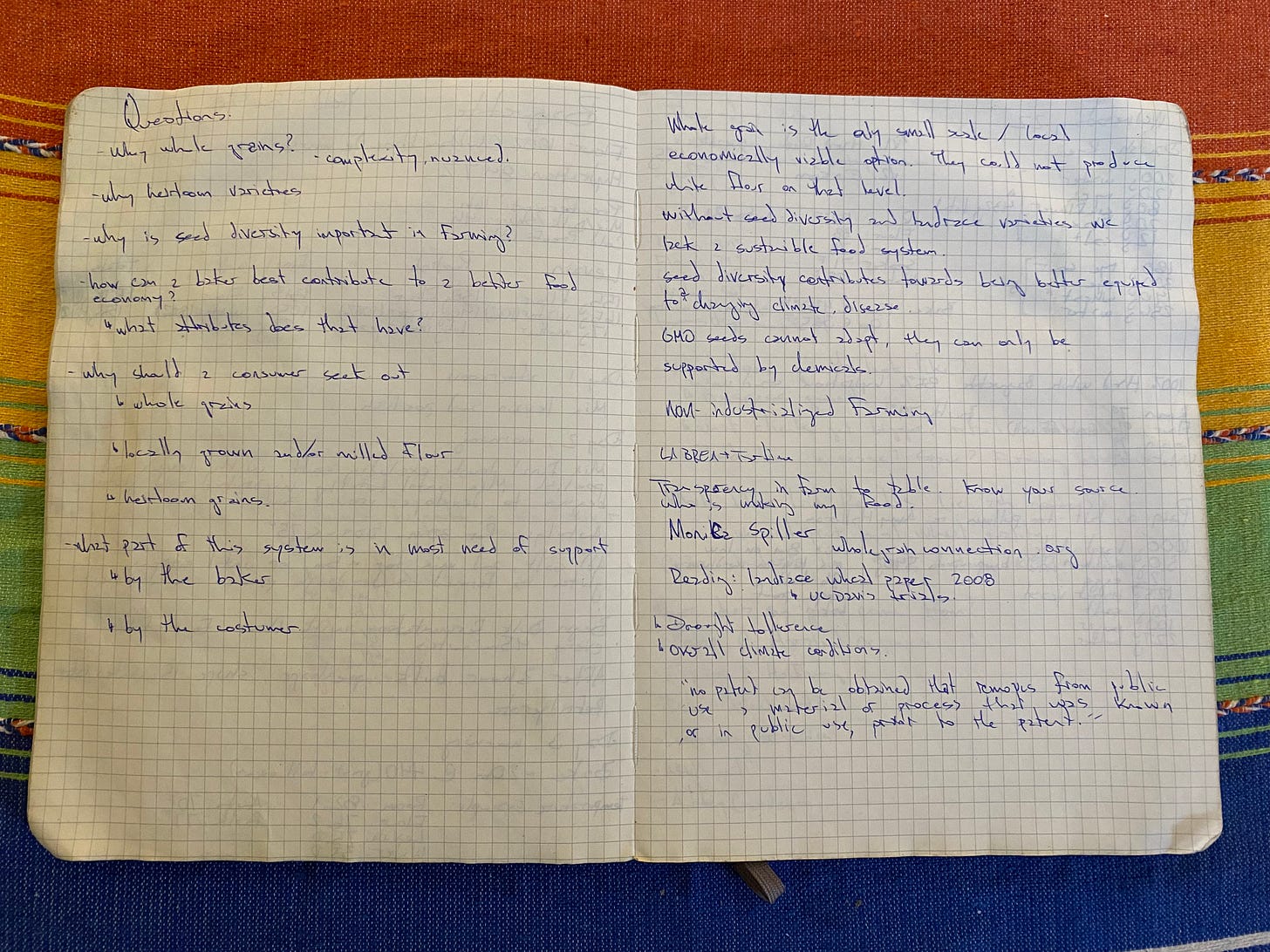
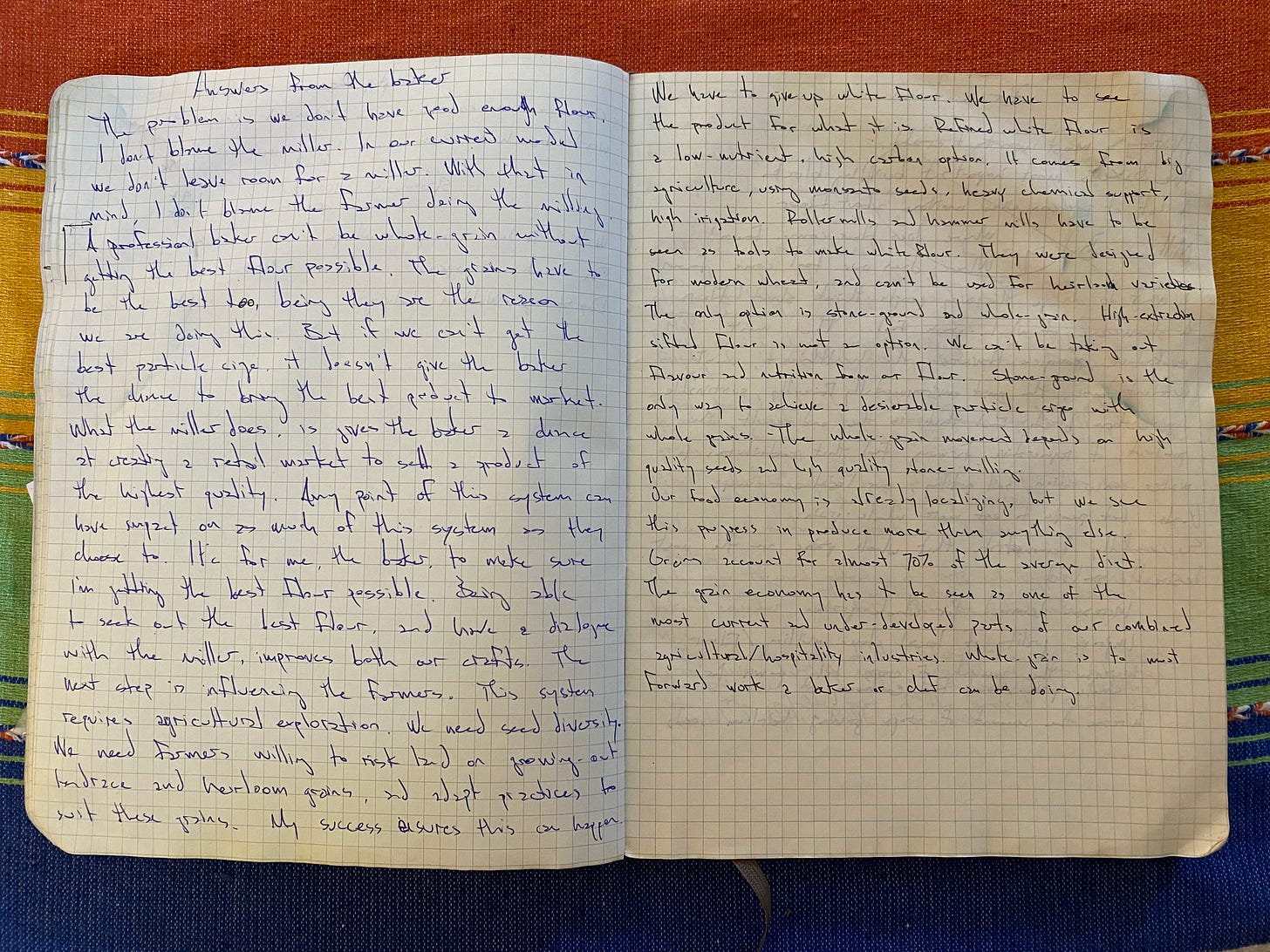


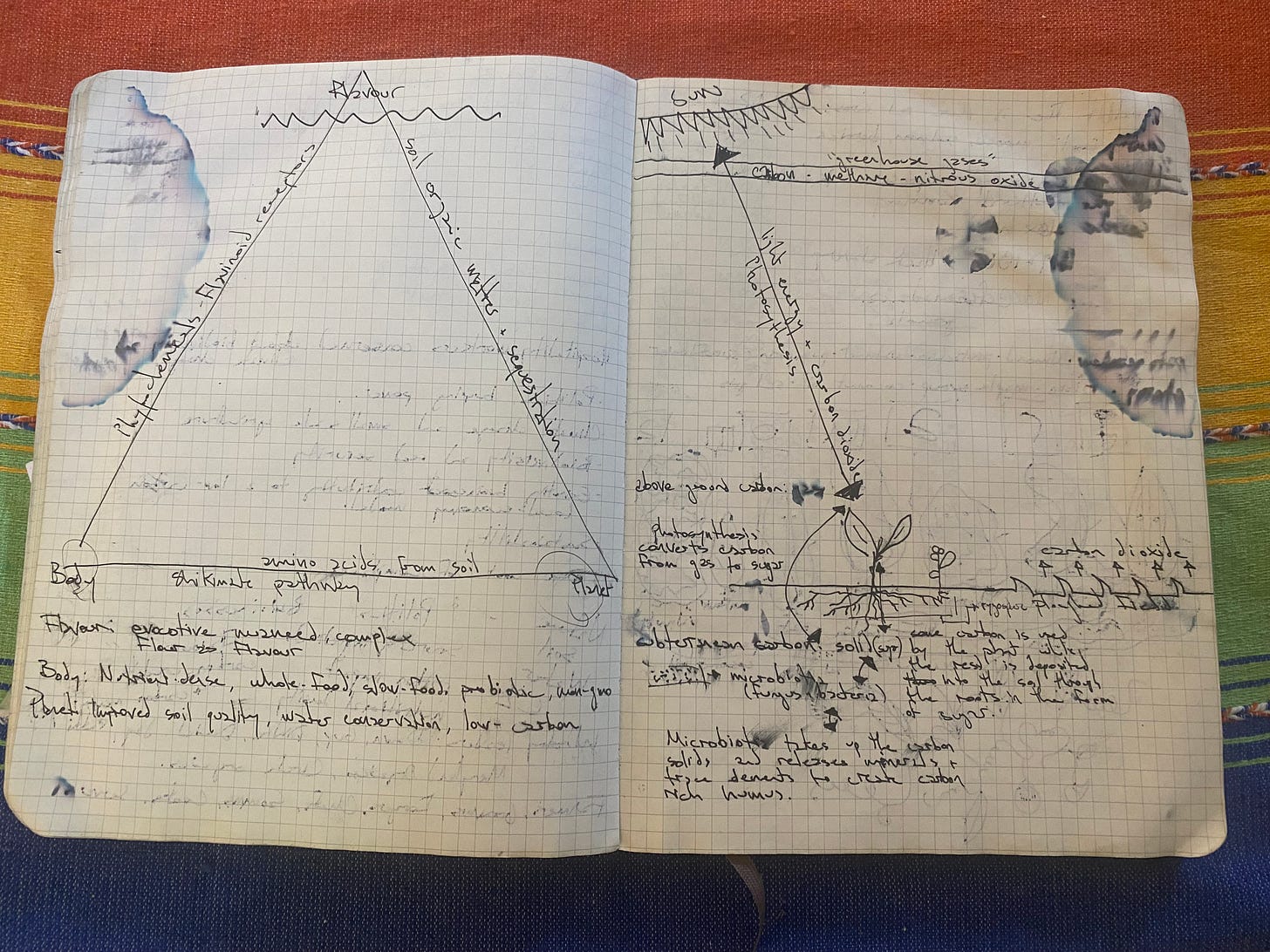
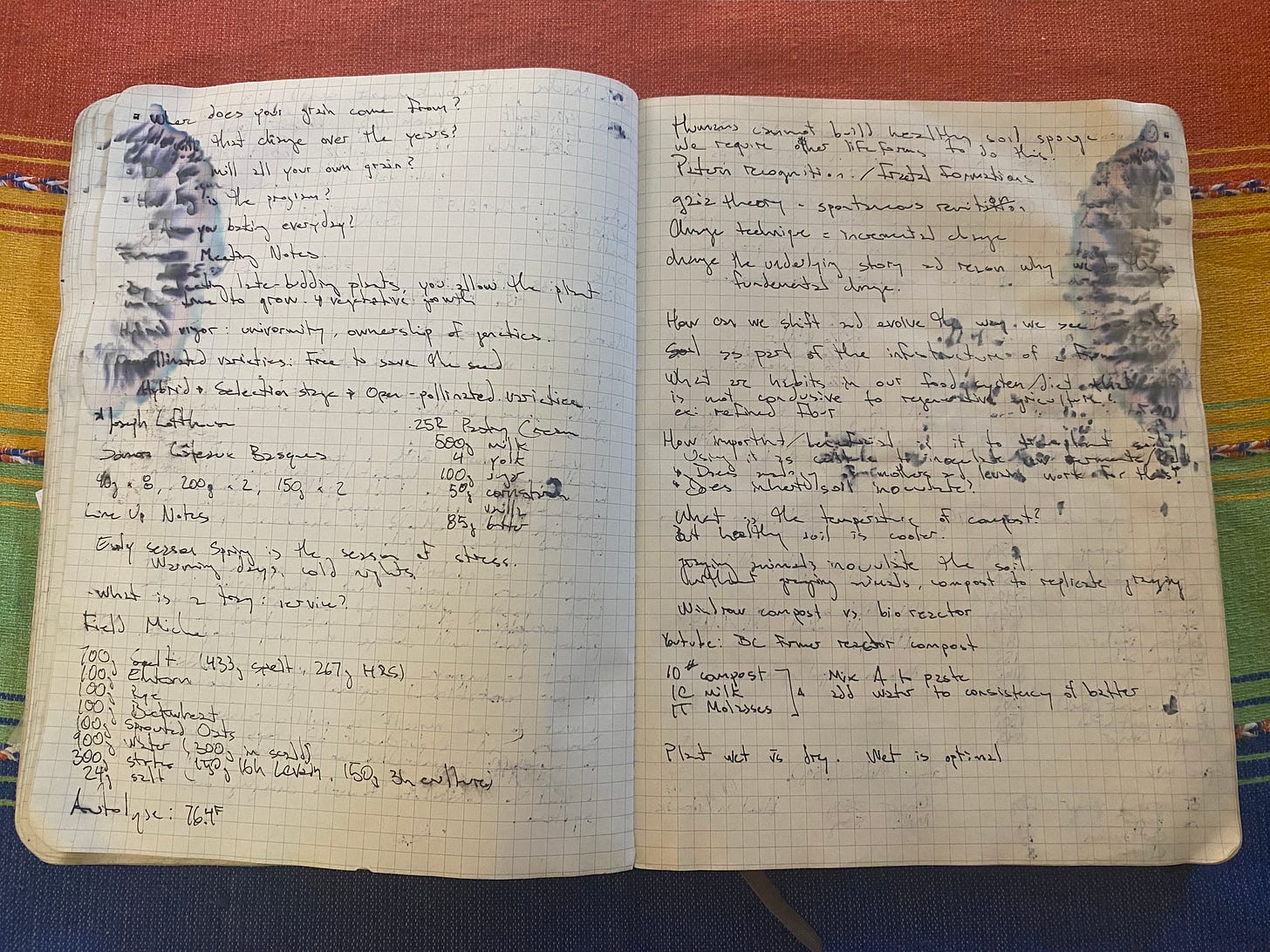
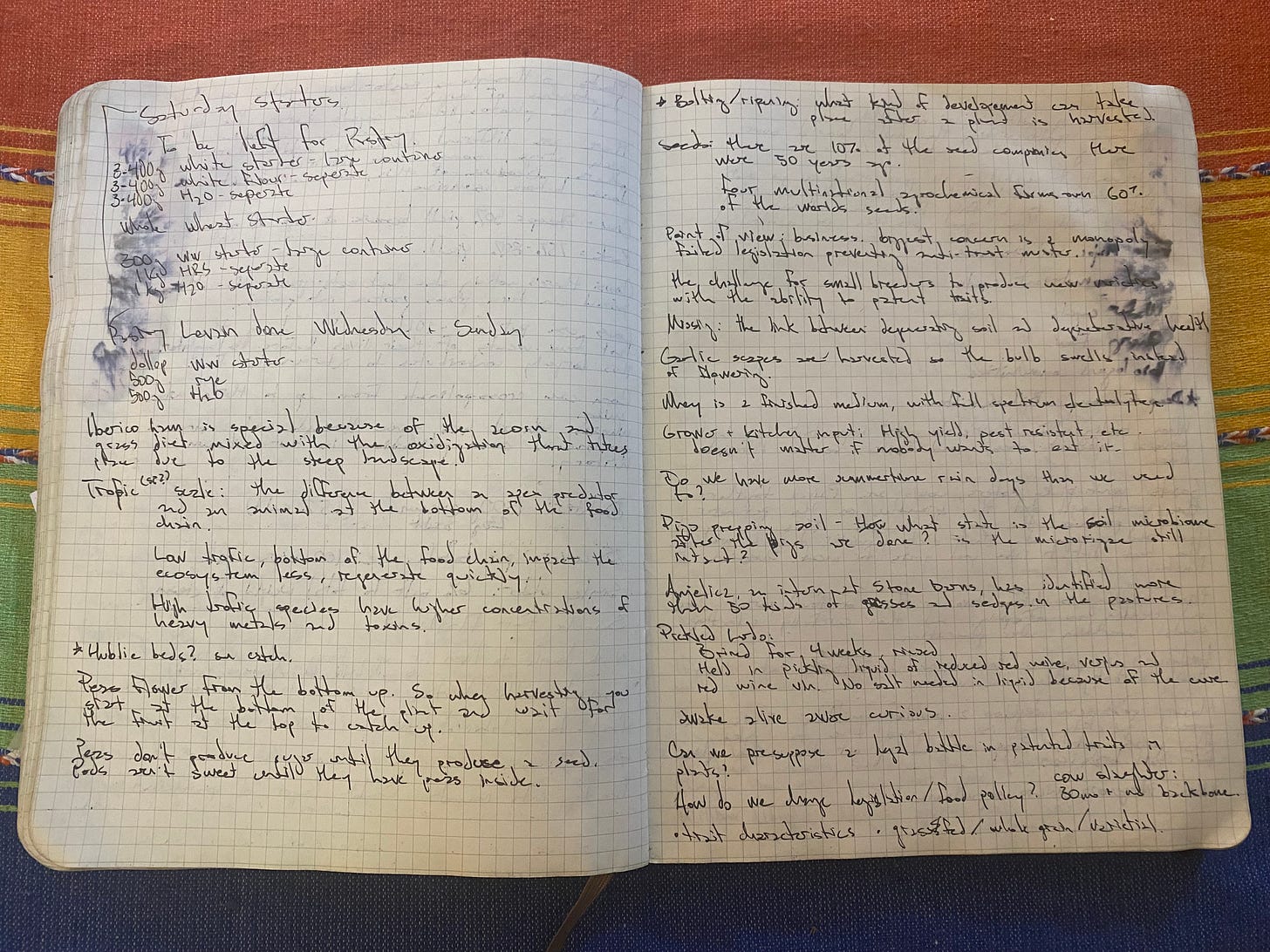
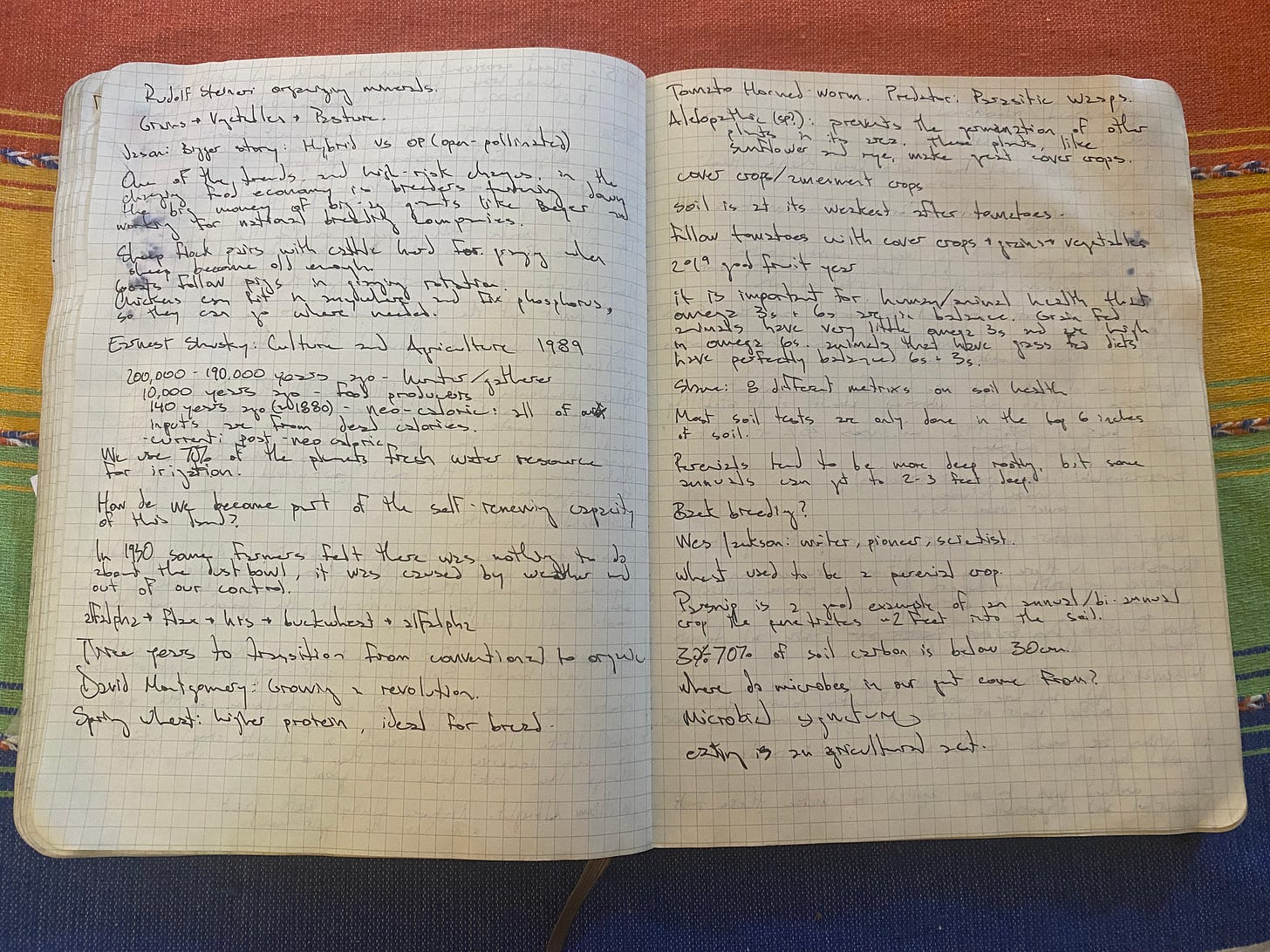
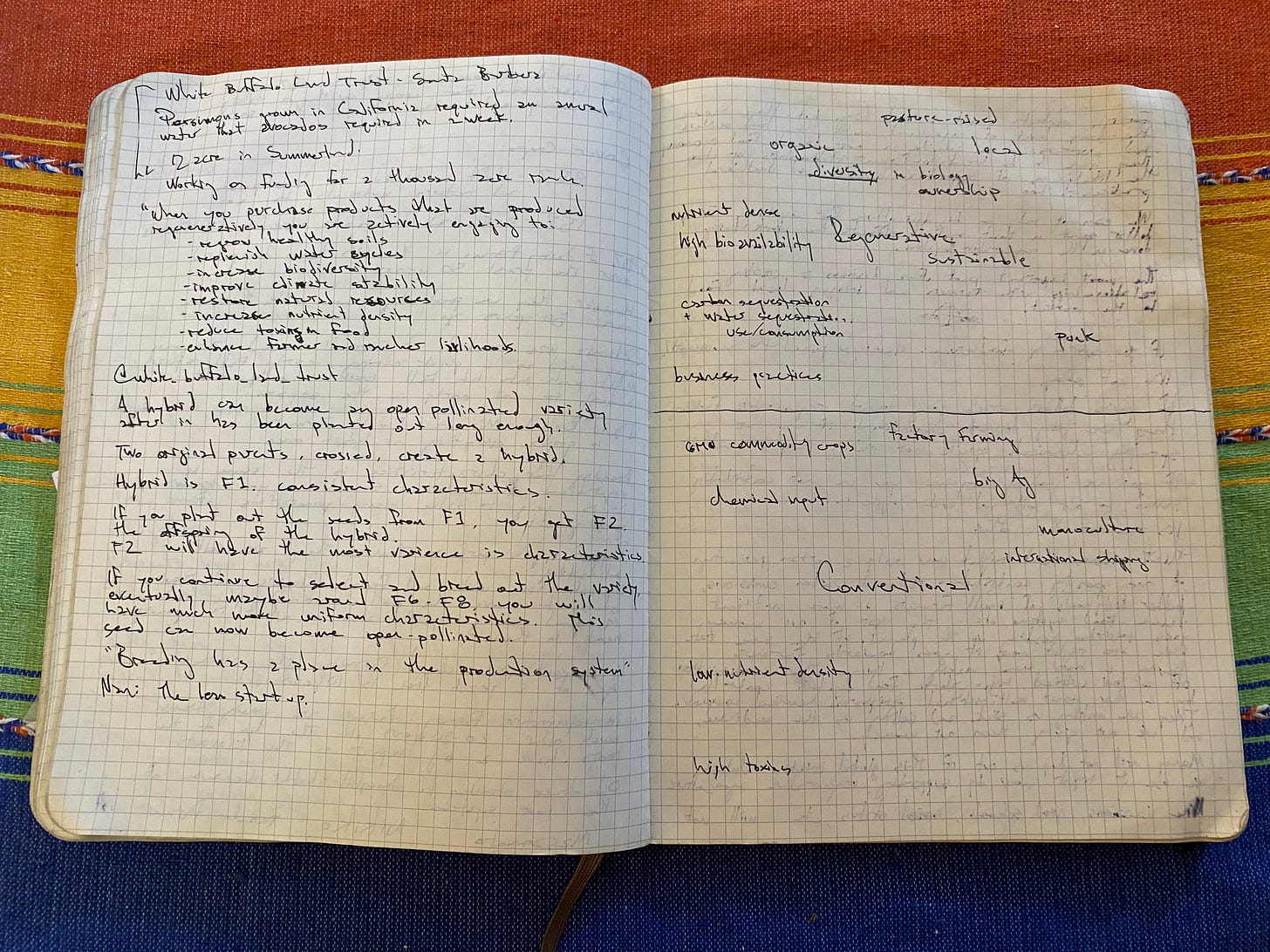
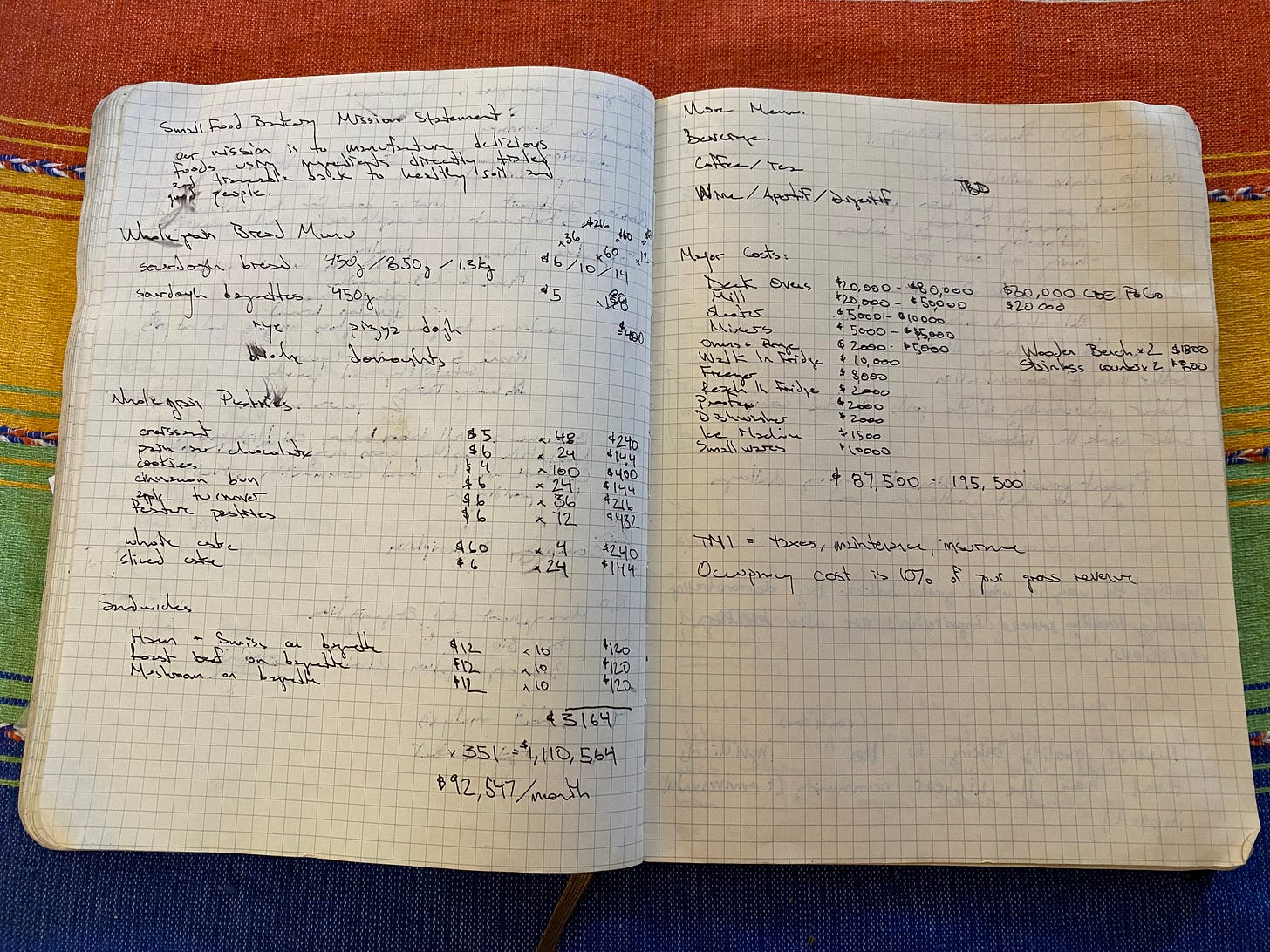
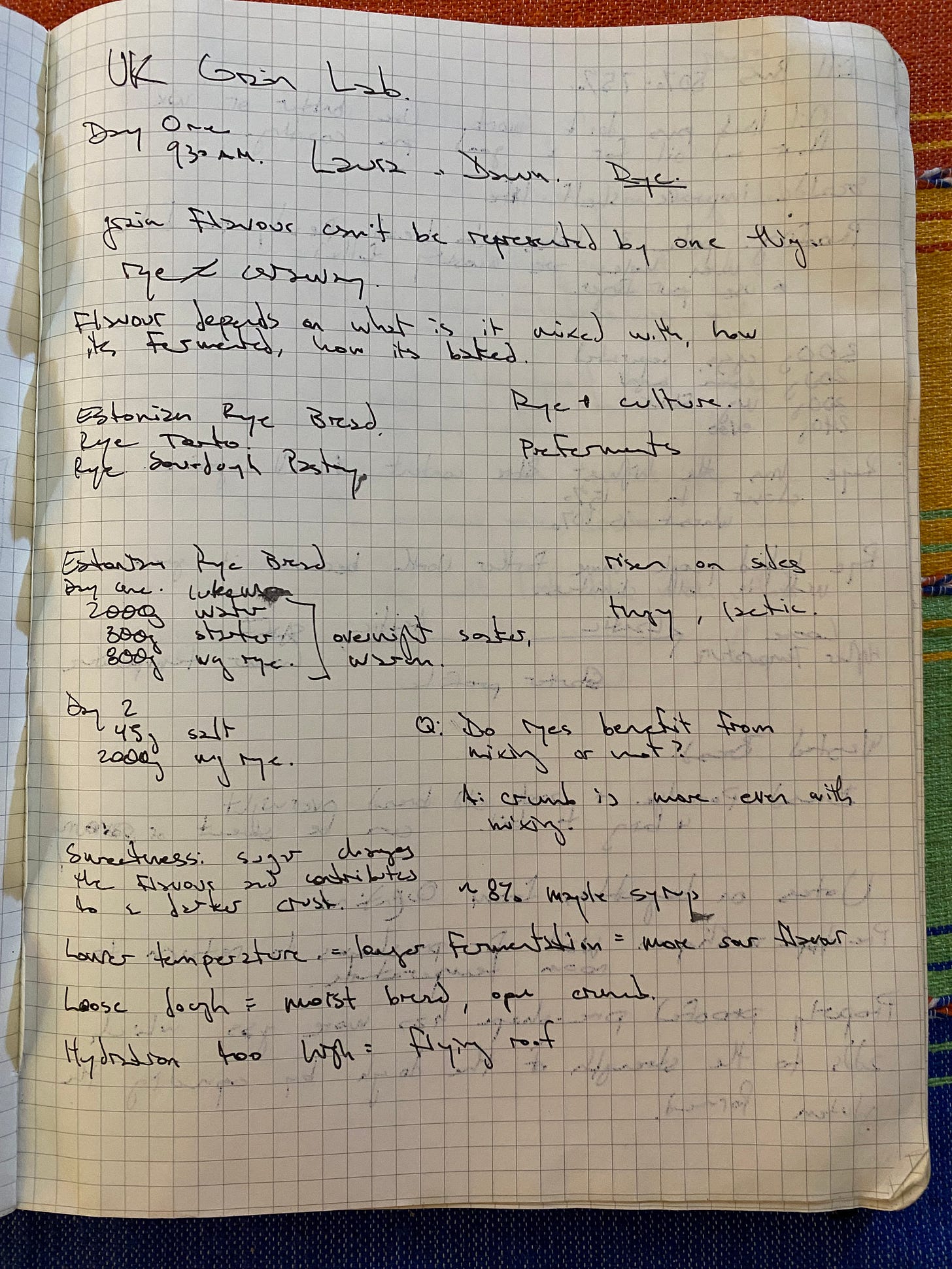
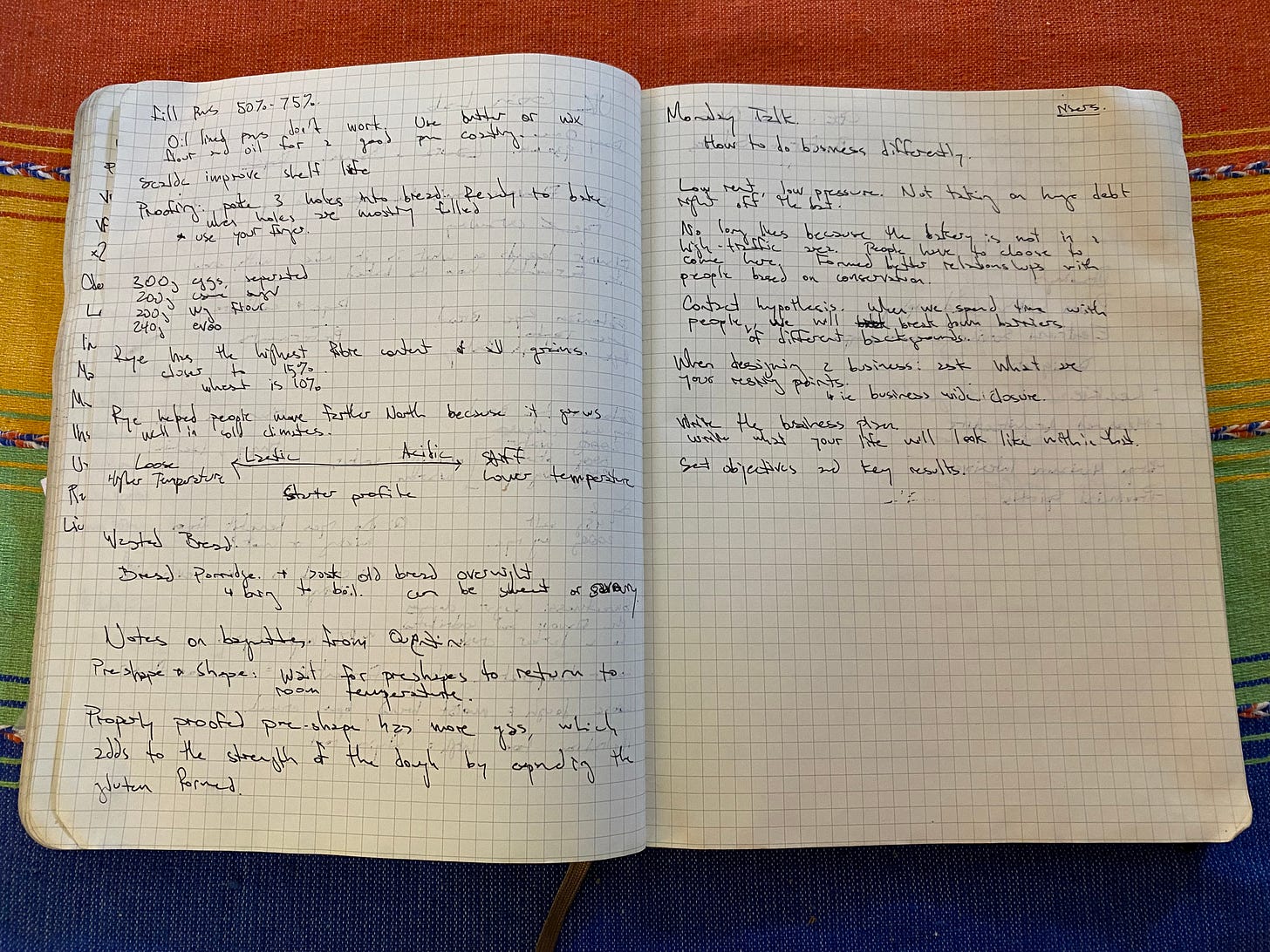
How great to read about your process! I love your thought about notebooks as a tool of learning. Hits the nail on the head.